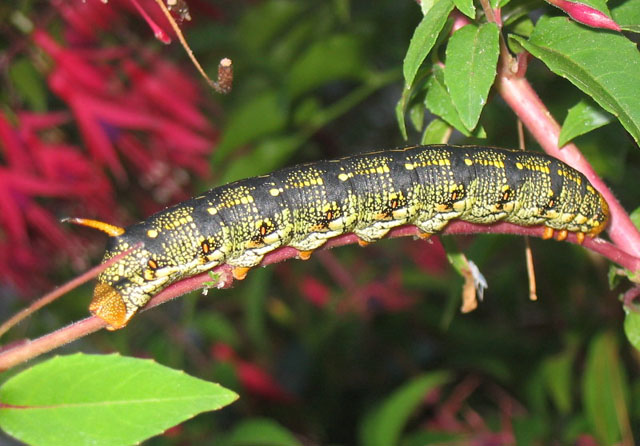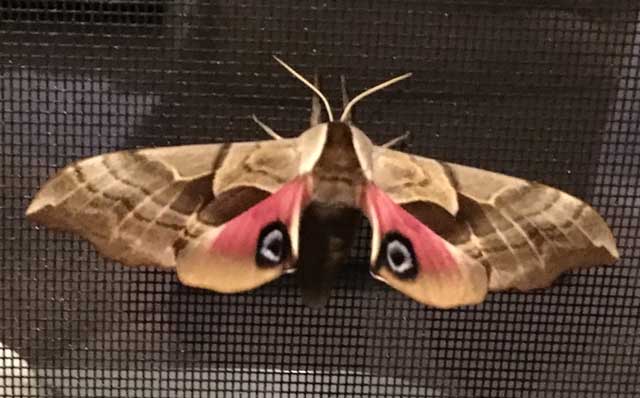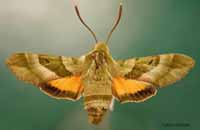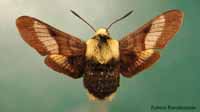Thurston County, Washington
Sphingidae
|
|
Created/dedicated as per personal communication with Liz Hoenig, September, 2005 Updated as per personal comunication with David Olson, 2005 Updated for Hemaris thetis, August 2009, replacing H. diffinis; probably H. senta is also H. thetis. Updated as per personal comunication with Clara Turnbull-Murphy, July 2010 Updated as per James P. Tuttle's The Hawk Moths of North America, July 2010 Updated as per personal comunication with Barb Carey, Olympia, July 29, 2018 Updated as per BAMONA, July 29, 2018 |

Liz writes, "Our childcare provider found several unusual
caterpillars on her hardy fuchsia plant - and asked for help from
parents to identify."This page is inspired by and dedicated to Liz Hoenig who sent me the image of the
highly variable Hyles lineata larva at the top of the page.
The Cascades seem to be a barrier to some of the more eastern species.
A "USGS" indicates the moth is reported in USGS and/or in Moths of Western North America, #2. Distribution of Sphingidae of Western North America, revised, an excellent little booklet available through Paul Opler.
A "WO" after the species name indicates that I have no confirmed reports of this species in Thurston County, but I (William Oehlke) expect that this moth is or might be present.
Please help me develop this list with improved, documented accuracy by sending sightings (species, date, location), preferably with an image, via email to Bill Oehlke.
Many thanks to Barb Carey who provides this beautiful image of Smerinthus ophthalmica.

Smerinthus ophthalmica, Olympia, Thurston County, Washington,
July 29, 2018, courtesy of Barb Carey.
Visit Sphingidae of the Americas Checklists: Adult Moths and Larvae (Caterpillars) for all US states, all Canadian provinces, Mexico, and all countries in Central and South America.
Visit North Americana Catocala: Underwing Moths.
Sphinginae subfamily
Smerinthini Tribe:
Smerinthus ophthalmica moth, David Olson, 10 p.m. Olympia, WA 7/26/05Dilophonotini tribe:
Macroglossini tribe:
|
 | Proserpinus clarkiae WO, Clark's SphinxThis day flier, April-June, prefers oak woodland and pine-oak woodland in foothills. Moths nectar at a variety of flowers in the afternoon. |
 |
Proserpinus flavofasciata
WO,
the Yellow-banded Day Sphinx |
Enjoy some of nature's wonderments, giant silk moth cocoons. These cocoons are for sale winter and fall. Beautiful Saturniidae moths will emerge the following spring and summer. Read Actias luna rearing article. Additional online help available.
Use your browser "Back" button to return to the previous page.
This page is brought to you by Bill Oehlke and the WLSS. Pages are on space rented from Bizland. If you would like to become a "Patron of the Sphingidae Site", contact Bill.
Please send sightings/images to Bill. I will do my best to respond to requests for identification help.
 Show appreciation for this site by clicking on flashing butterfly to the left. The link will take you to a page with links to many insect sites. |